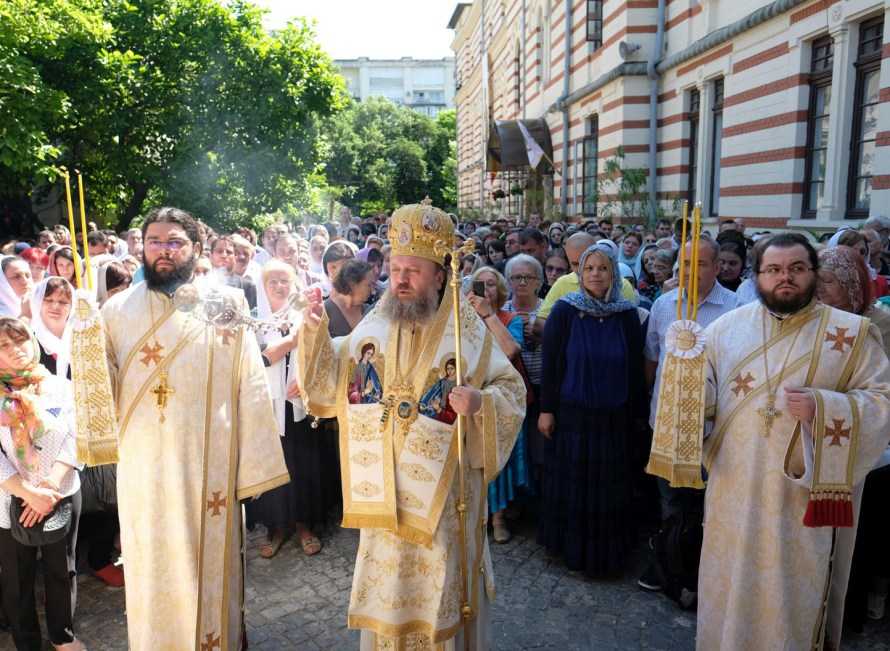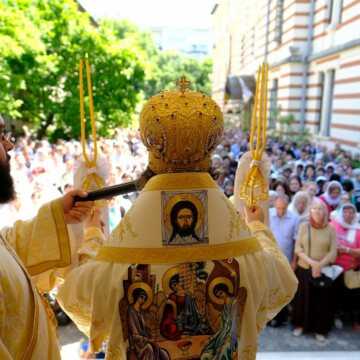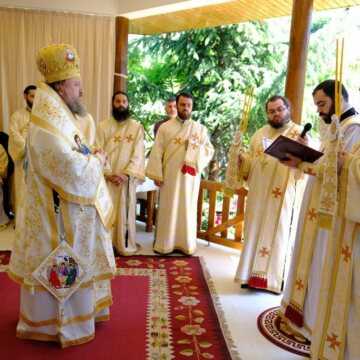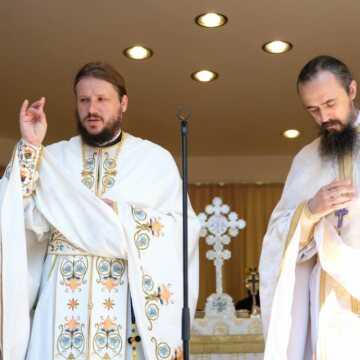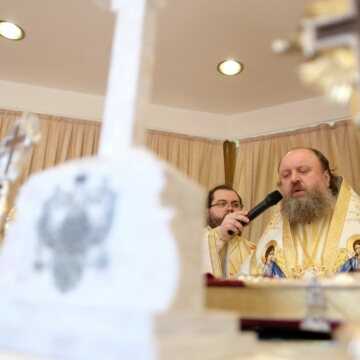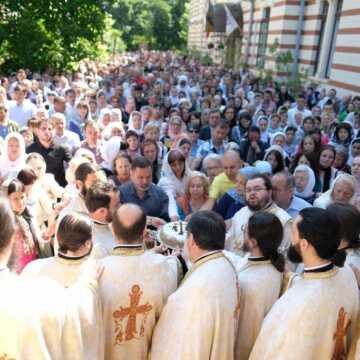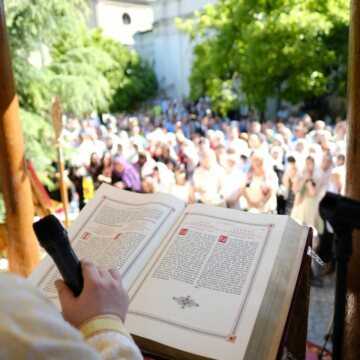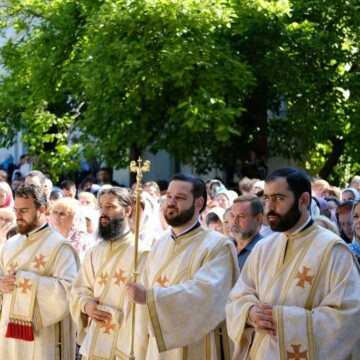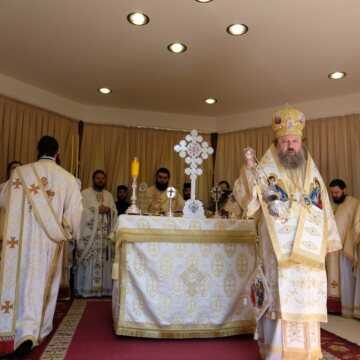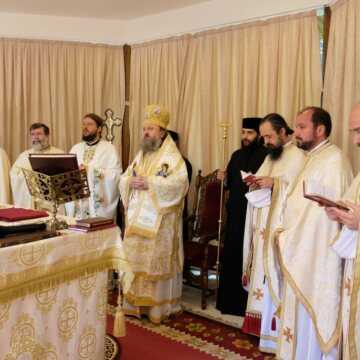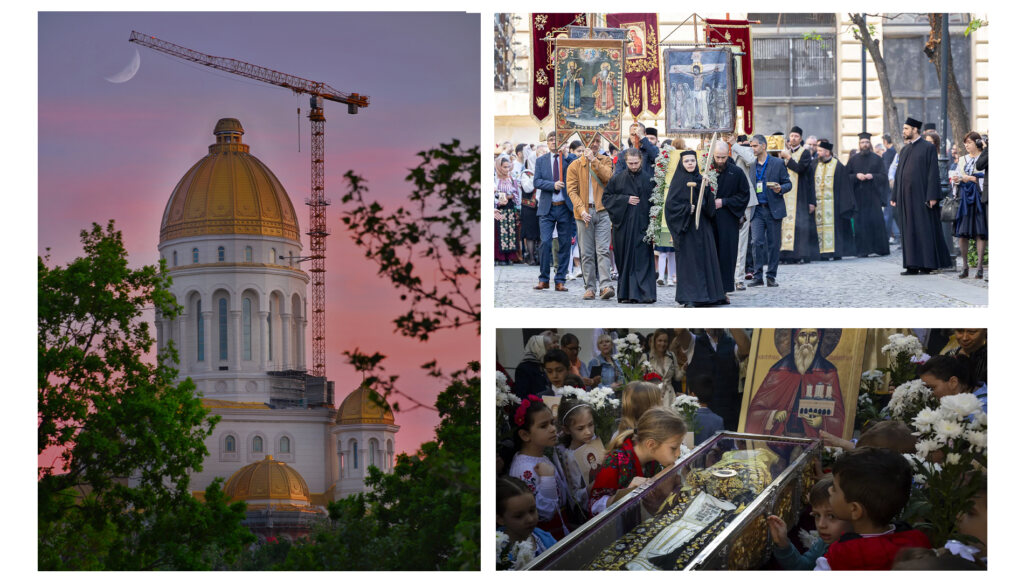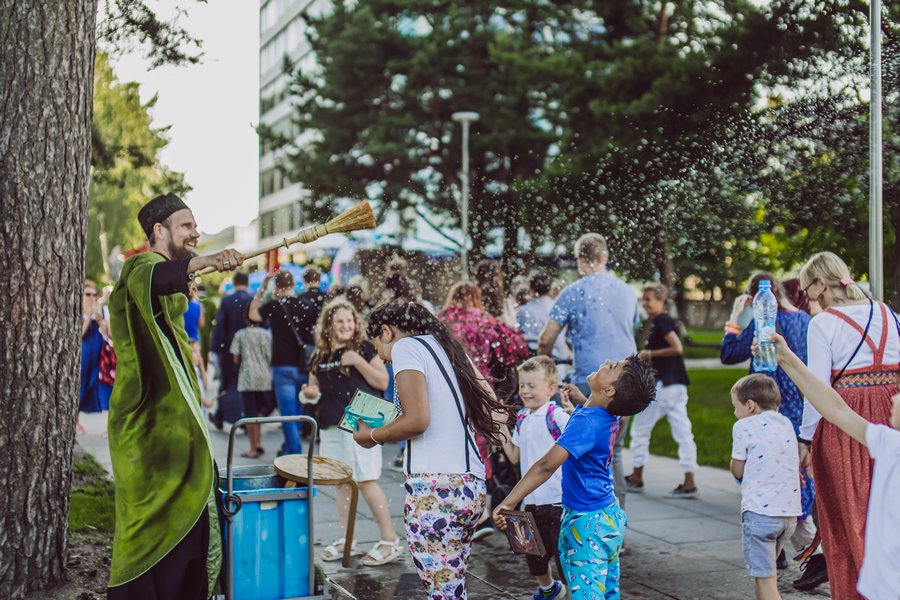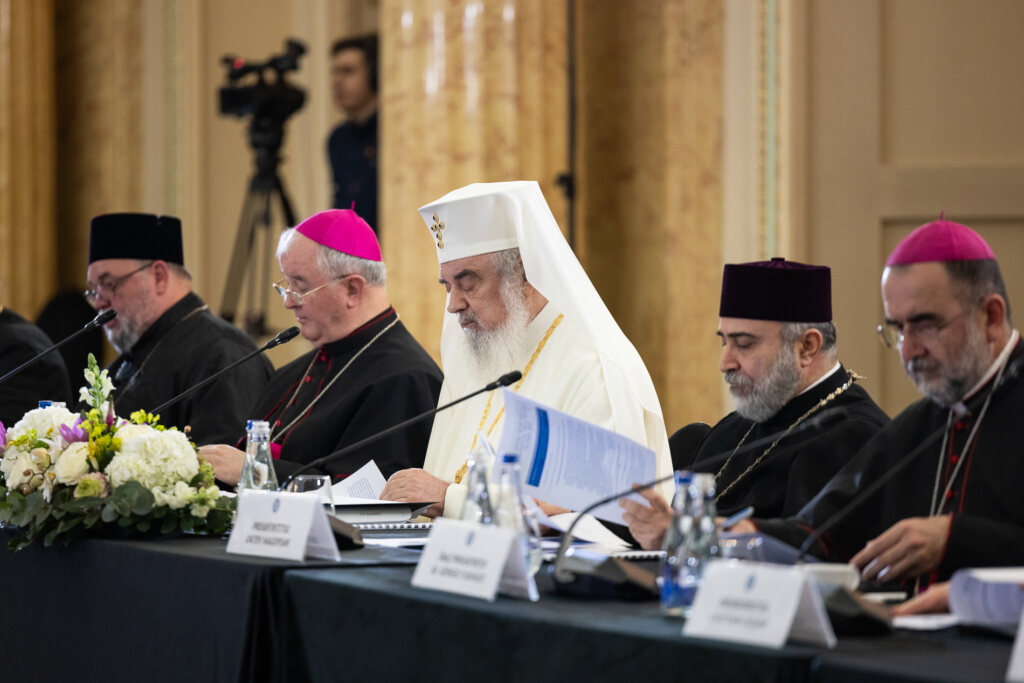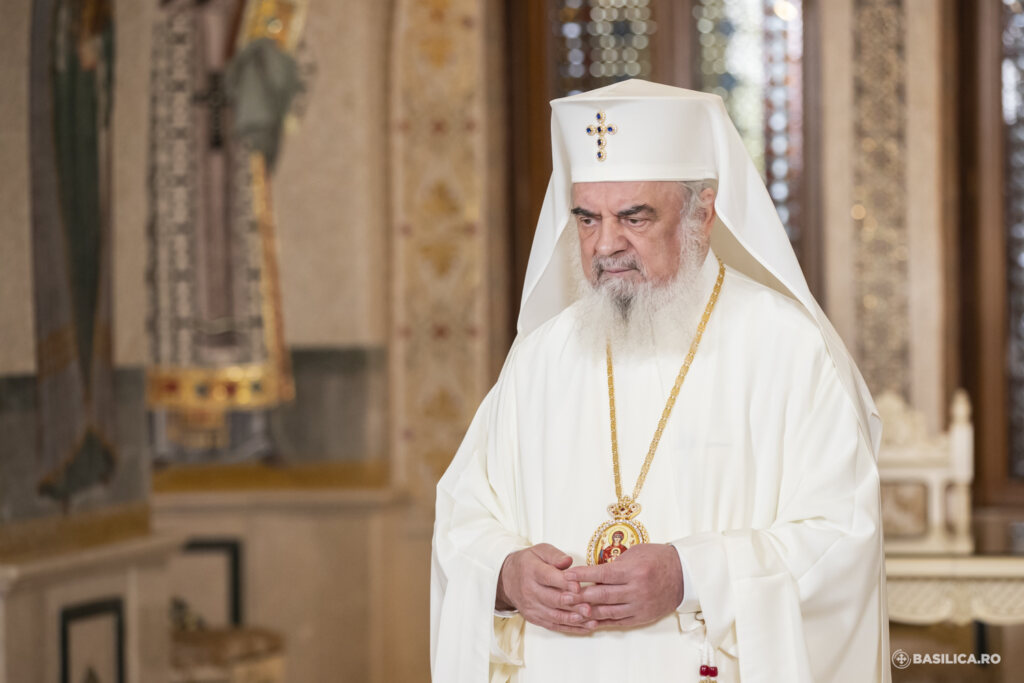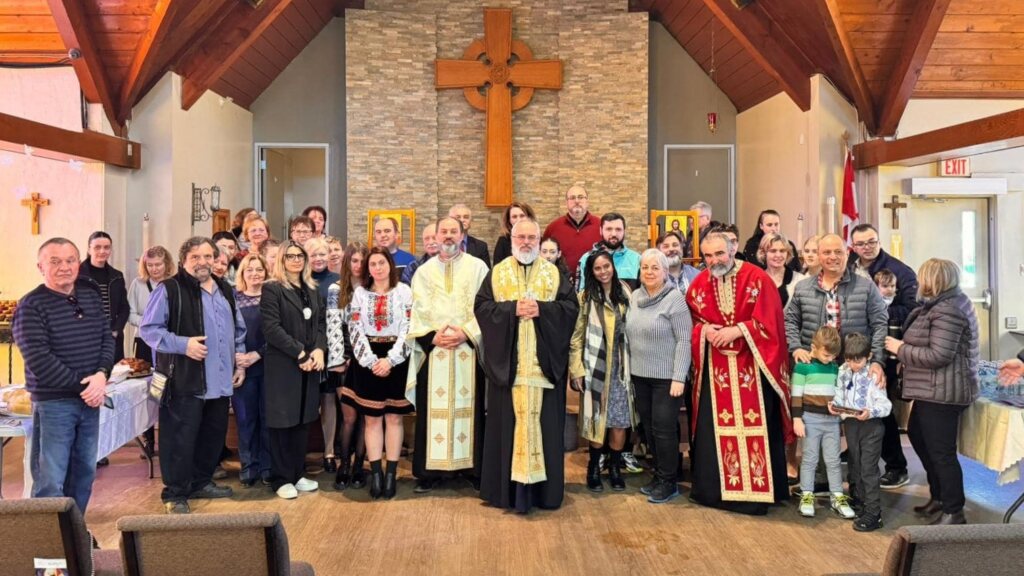The Assistant Bishop to the Archdiocese of Bucharest urged the believers present on the patronal feast of the Radu-Vodă Monastery that we must learn from the love and the communion of the most Holy Trinity. The world of today needs love and communion, and the absolute model is the Holy Trinity, His Grace Bishop Timotei of Prahova said in his homily.
Hundreds of believers from Bucharest took part, on 5 June 2017, in the patronal feast of the Radu-Vodă Monastery. The Divine Liturgy was celebrated by Bishop Timotei of Prahova, Assistant Bishop to the Archdiocese of Bucharest.
Concelebrants for the Divine Liturgy included Archimandrite Nectarie Şofelea, abbot of the Radu-Vodă Monastery, professors of the Orthodox Theological Seminary from Bucharest and other clergy from the monastery.
In his homily, the hierarch advised all Orthodox believers to attend the divine services in order to understand the Mystery of the Holy Trinity:
Every son of the Church must deepen the mystery and love of the Most Holy Trinity by participating in all the services of the Church, which are officiated in the name of the Holy Trinity. The Divine Liturgy and all other services begin with the blessing in the name of the Most Holy Trinity. Also referring to the Holy Trinity, the hierarch added that this is precisely the example we must observe.
This is why many of the important churches of the Romanian land have as patronal feast the feast of the Holy Trinity, precisely to remind us of the unity and of the perfect communion, as it is perfectly fulfilled only in the bosom of the Most Holy Trinity.
His Grace, Bishop Timotei of Prahova went on to say that through humility, and through reading, we can understand this great Mystery:
The mystery of the Holy Trinity can only be deepened through deep faith, humility, and to a lesser extent by reading, but above all by living, by loving, and by following the Trinitarian example. When I say living, I refer to the unseen side of things.
Many people prefer an exterior image rather than an inner image. We must struggle for the way of living which the Lord recommends us in discretion.
The hierarch noted that we could say that the day of the Most Holy Trinity is always present in the Orthodox Church because, as the Holy Fathers have said, the Church is full of the Holy Trinity.
The Radu Vodă Monastery, patronated the Holy Trinity and St. Nectarius of Eghina, was founded by the ruler prince Alexandru II Mircea (1568-1577) and his wife, Ecaterina.
At the time of its foundation, it was named after the Holy Trinity. In the troubles of those times, in 1595 the holy settlement fell into the hands of the Turks. After the victory of Michael the Brave in October 1595, at Târgovişte, Sinan Pasha was forced to withdraw from the face of the victorious army of Christians. Not before destroying all the fortifications he himself had built, and before demolishing the Holy Trinity Monastery.
It is only in 1614, that ruler prince Radu Mihnea (1601-1602, 1611-1616, 1620-1623) began the reconstruction, keeping the plans and elevation of the original edifice. The church has been known since then by the name of the founder. His son and successor to the throne, Alexander Coconul (1623-1627), cared for the painting of the church.
The plan and the architectural shaping of the Radu-Vodă church are inspired by those of the episcopal church from Curtea de Argeş, with the difference that the building material used is not stone but brick. The plan is a triconch, with a dome on the nave, with an enlarged narthex, covered with three other domes, the main one resting on twelve columns, symbolizing the twelve apostles, as its model from Curtea de Argeş.
Tr by Bogdan Neacşiu
Edited by basilica.ro
